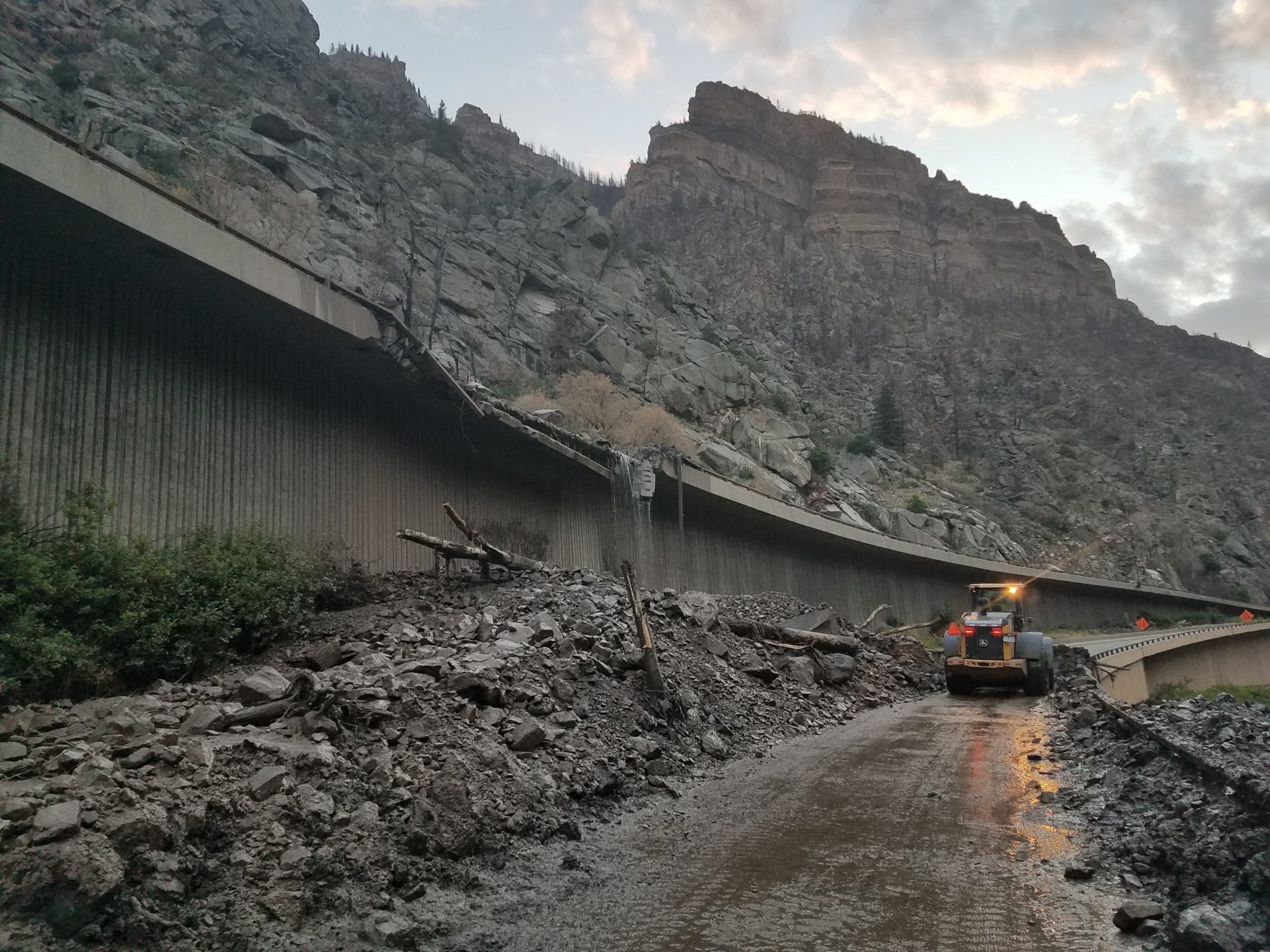Well, it’s finally infrastructure week and not a moment too soon. On Sunday, Colorado’s crucial east-west artery of I-70 shut down indefinitely “due to extreme damage from the latest round of flooding” to hit the state.
Heavy rains fell, unleashing a torrent of debris onto I-70 near Glenwood Springs. It’s the latest in a summer of infrastructure failures tied to extreme floods from Detroit to large swaths of Europe. But this one comes with a diabolical twist: The heavy rains fell on a wildfire burn scar from last year, showing how climate change impacts can compound and make a bad situation worse.
The debris flow is the worst yet to strike the region. State roadway managers have been closing stretches of I-70 in the burn scar area throughout the summer whenever flash flood warnings have been issued. (There’s yet another one in place for Monday with heavy rains strafing the region.) More than 100 motorists were trapped on the interstate during the storms and debris flows, though thankfully all were rescued without incident. The damage wrought late last week dwarfed previous instances of flooding on the roadway, leading the Colorado Department of Transportation to shut down the highway to take a closer look.
“This assessment was provided by senior operations supervisors and engineering staff who described damage to the viaduct structure unlike anything they had seen before,” said on Facebook.
Images show concrete ripped from the roadway and guardrails while trees and rocks clog the roadway. Aerial video captured by Fox 31, the local affiliate, further shows the damage with rocks and debris thickly piled up around rest storm signs as crews clear a path. The interstate will remain closed until at least this weekend, forcing those travelling it to take a detour that will add hours to any trip through the area and further snarling supply chains. It all feels wearily familiar. Heavy rains blitzed Detroit earlier this summer, leading to flash flooding that turned highways there into canals. Even more widespread and damaging floods have ripped through areas as far away as China and large portions of Europe in recent weeks as well.

Climate change is increasing the odds of heavy downpours since a hotter atmosphere can hold more water. That’s all well and good… until said water exits the atmosphere in deluges that can cover roadways in water or rubble (or both). Heavy downpours have increased in every corner of the U.S., including Colorado. But the state — and others across the West — are seeing those downpours fall on top another hallmark of climate change.
The Grizzly Creek Fire was among a number of blazes that lit up Colorado last year, including two of the state’s largest on records and one fire that marched over the crest of the Rockies in October. (To be clear, that is very bad and very not normal.) It fits with a trend of increasingly large and destructive wildfires that can leave slopes denuded and destabilized. That, in turn, increases the odds of even moderate rains unleashing debris flows like the ones that have closed I-70.
American roads currently get a D grade from the American Society for Civil Engineers, with Colorado specifically only faring slightly better with a C-. The bipartisan infrastructure proposal unveiled on Sunday night would allow states to spend up to 15% of funds from the Highway Trust Fund — currently funded to around $US500 ($679) million annually — on addressing flooding issues, including moving roadways. The proposal also has a handful of other flood provisions as well, including protecting infrastructure from coastal flooding as well. But it’s the tip of the iceberg of what’s needed. (Don’t even get me started on public transit.)
